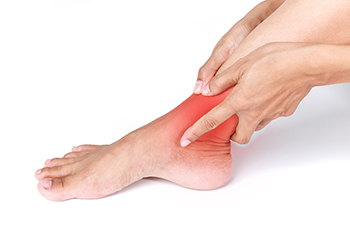Blog
Items filtered by date: April 2023
Tuesday, 25 April 2023 00:00
Drinking Water and Stretching Can Prevent Running Injuries

The majority of runners dread incurring an injury that may force them to stop running or jogging. It is often necessary to temporarily stop the activity that led to the injury, which will allow ample time for healing. There are simple and effective methods that can be implemented which may help to prevent running injuries. These can include warming up and cooling down before and after running, which can consist of spending adequate time stretching the leg and foot muscles. It is also important to wear shoes that fit correctly, in addition to slowly increasing speed and mileage appropriately. Drinking plenty of water before, during, and after running can keep the body hydrated, which is crucial for healthy running. Some people enjoy getting routine massages, and this is helpful in keeping the muscles limber. If you would like more information about how to prevent running injuries, it is suggested that you speak with a podiatrist who can offer you helpful tips.
All runners should take extra precaution when trying to avoid injury. If you have any concerns about your feet, contact one of the podiatrists of JE Foot & Ankle Associates. Our doctors will treat your foot and ankle needs.
How to Prevent Running Injuries
There are a lot of mistakes a runner can make prior to a workout that can induce injury. A lot of athletes tend to overstretch before running, instead of saving those workouts for a post-run routine. Deep lunges and hand-to-toe hamstring pulls should be performed after a workout instead of during a warmup. Another common mistake is jumping into an intense routine before your body is physically prepared for it. You should try to ease your way into long-distance running instead of forcing yourself to rush into it.
More Tips for Preventing Injury
- Incorporate Strength Training into Workouts - This will help improve the body’s overall athleticism
- Improve and Maintain Your Flexibility – Stretching everyday will help improve overall performance
- “Warm Up” Before Running and “Cool Down” Afterward – A warm up of 5-10 minutes helps get rid of lactic acid in the muscles and prevents delayed muscle soreness
- Cross-Training is Crucial
- Wear Proper Running Shoes
- Have a Formal Gait Analysis – Poor biomechanics can easily cause injury
If you have any questions, please feel free to contact one of our offices located in Fleming Island and Palm Coast, FL . We offer the newest diagnostic and treatment technologies for all your foot care needs.
Tuesday, 18 April 2023 00:00
Blisters on the Feet

A blister, sometimes referred to as a shoe bite, is an area of the foot that rubs against the shoe and causes pain. The first order of business in preventing blisters is to wear shoes that fit properly. Wearing socks will help provide a cushion between the foot and the shoe. Toe protectors or toe caps can cushion toes from shoes and prevent painful friction. Shoe pads or insoles can also help prevent any abrasive areas. If you have developed a blister, it is important to stop wearing the shoes that caused it and wear open shoes so they can heal. Putting a bandage over the blister while it is healing can help prevent infection. If a blister does not heal, worsens, or becomes infected, it is suggested that you see a podiatrist for a proper diagnosis and treatment.
Blisters are prone to making everyday activities extremely uncomfortable. If your feet are hurting, contact one of the podiatrists of JE Foot & Ankle Associates. Our doctors can provide the care you need to keep you pain-free and on your feet.
Foot Blisters
Foot blisters develop as a result of constantly wearing tight or ill-fitting footwear. This happens due to the constant rubbing from the shoe, which can often lead to pain.
What Are Foot Blisters?
A foot blister is a small fluid-filled pocket that forms on the upper-most layer of the skin. Blisters are filled with clear fluid and can lead to blood drainage or pus if the area becomes infected.
How Do Blisters Form?
Blisters on the feet are often the result of constant friction of skin and material, usually by shoe rubbing. Walking in sandals, boots, or shoes that don’t fit properly for long periods of time can result in a blister. Having consistent foot moisture and humidity can easily lead to blister formation.
Prevention & Treatment
It is important to properly care for the affected area in order to prevent infection and ease the pain. Do not lance the blister and use a Band-Aid to provide pain relief. Also, be sure to keep your feet dry and wear proper fitting shoes. If you see blood or pus in a blister, seek assistance from a podiatrist.
If you have any questions, please feel free to contact one of our offices located in Fleming Island and Palm Coast, FL . We offer the newest diagnostic and treatment technologies for all your foot care needs.
Tuesday, 11 April 2023 00:00
Three Types of Corns

Corns on the feet are generally uncomfortable. They are defined as small, hardened layers of skin that develop as a result of excess friction. This is often caused by the shoes and socks that are worn and rub against the feet. Corns can form on the side of the pinky toe or on the bottom of the feet. Hard corns are considered to be the most common type of corns on the feet, and they are found on top of the toes. Corns that form between the toes are referred to as soft corns, and seed corns are on the soles of the feet. An effective method of preventing corns consists of wearing shoes that have enough room for the toes to move in freely. It is beneficial for people who enjoy wearing high heels to choose a shoe with the lowest heel height possible, in addition to refraining from wearing pointy shoes. Relief may be found when the foot is soaked in warm water, which can make it easier to use a pumice stone that can gently exfoliate it. If you have corns on your feet, it is suggested that you speak with a podiatrist who can offer you additional prevention techniques, and guide you toward the correct treatment.
If you have any concerns regarding your feet and ankles, contact one of the podiatrists of JE Foot & Ankle Associates. Our doctors will treat your foot and ankle needs.
Corns: What Are They? and How Do You Get Rid of Them?
Corns can be described as areas of the skin that have thickened to the point of becoming painful or irritating. They are often layers and layers of the skin that have become dry and rough, and are normally smaller than calluses.
Ways to Prevent Corns
There are many ways to get rid of painful corns such as wearing:
- Well-fitting socks
- Comfortable shoes that are not tight around your foot
- Shoes that offer support
Treating Corns
Treatment of corns involves removing the dead skin that has built up in the specific area of the foot. Consult with Our doctors to determine the best treatment option for your case of corns.
If you have any questions please feel free to contact one of our offices located in Fleming Island and Palm Coast, FL . We offer the newest diagnostic and treatment technologies for all your foot and ankle needs.
Thursday, 06 April 2023 00:00
Heel Pain Can Be Treated!
Tuesday, 04 April 2023 00:00
Ankle Pain and Avulsion Fractures

The ankle is an essential part of the human foot because it can act as a shock absorber and help facilitate motion. However, the ankle can also be subject to a significant amount of pain, which can cause discomfort to patients. One reason why the ankle might be subject to pain is due to something called an avulsion fracture. An avulsion fracture is a condition that can occur when, at the ligamentous or tendinous attachment, a piece of a bone is drawn away. Avulsion fractures at the ankle can be caused by a traumatic traction, when the tendon can bear more load than the bone. If you are someone that has recently endured an avulsion fracture, it is suggested that you schedule an appointment with a podiatrist immediately.
Ankle pain can be caused by a number of problems and may be potentially serious. If you have ankle pain, consult with one of the podiatrists from JE Foot & Ankle Associates. Our doctors will assess your condition and provide you with quality foot and ankle treatment.
Ankle pain is any condition that causes pain in the ankle. Due to the fact that the ankle consists of tendons, muscles, bones, and ligaments, ankle pain can come from a number of different conditions.
Causes
The most common causes of ankle pain include:
- Types of arthritis (rheumatoid, osteoarthritis, and gout)
- Ankle sprains
- Broken ankles
- Achilles tendinitis
- Achilles tendon rupture
- Stress fractures
- Bursitis
- Tarsal tunnel syndrome
- Plantar fasciitis
Symptoms
Symptoms of ankle injury vary based upon the condition. Pain may include general pain and discomfort, swelling, aching, redness, bruising, burning or stabbing sensations, and/or loss of sensation.
Diagnosis
Due to the wide variety of potential causes of ankle pain, podiatrists will utilize a number of different methods to properly diagnose ankle pain. This can include asking for personal and family medical histories and of any recent injuries. Further diagnosis may include sensation tests, a physical examination, and potentially x-rays or other imaging tests.
Treatment
Just as the range of causes varies widely, so do treatments. Some more common treatments are rest, ice packs, keeping pressure off the foot, orthotics and braces, medication for inflammation and pain, and surgery.
If you have any questions, please feel free to contact one of our offices located in Fleming Island and Palm Coast, FL . We offer the newest diagnostic and treatment technologies for all your foot care needs.
Blog Archives
- May 2025
- April 2025
- March 2025
- February 2025
- January 2025
- December 2024
- November 2024
- October 2024
- September 2024
- August 2024
- July 2024
- June 2024
- May 2024
- April 2024
- March 2024
- February 2024
- January 2024
- December 2023
- November 2023
- October 2023
- September 2023
- August 2023
- July 2023
- June 2023
- May 2023
- April 2023
- March 2023
- February 2023
- January 2023
- December 2022
- November 2022
- October 2022
- September 2022
- August 2022
- July 2022
- June 2022
- May 2022
- April 2022
- March 2022
- February 2022
- January 2022
- December 2021
- November 2021
- October 2021
- September 2021
- August 2021
- July 2021
- June 2021
- May 2021
- April 2021
- March 2021
- February 2021
- January 2021
- December 2020
- November 2020
- October 2020
- September 2020
- August 2020
- July 2020
- June 2020
- May 2020
- April 2020
- March 2020
- February 2020
- January 2020
- December 2019
- November 2019
- October 2019
- September 2019

